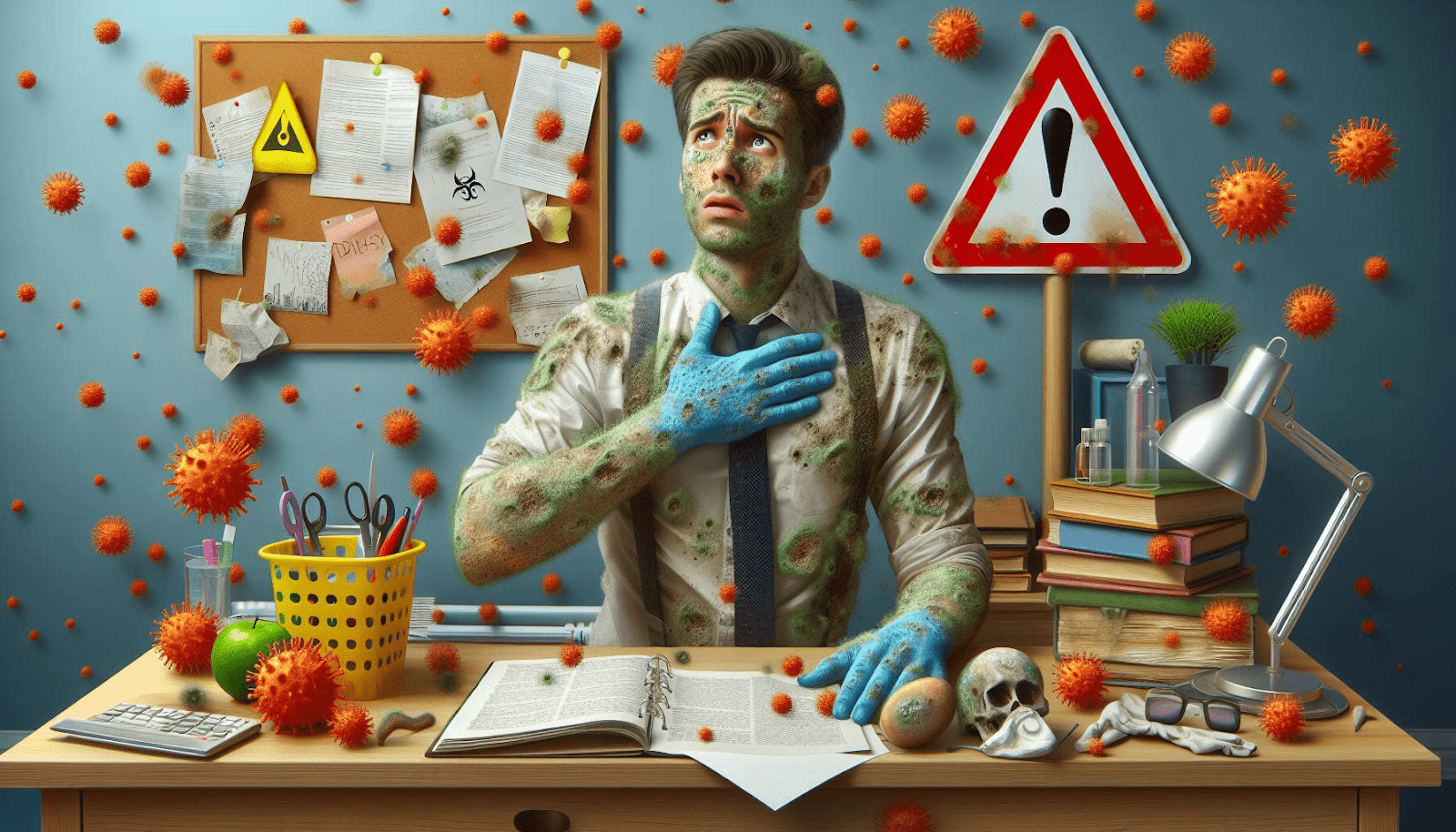10 Warning Signs You May Be Suffering From Mold Toxicity

Mold is something that no homeowner ever wants to discover. Unfortunately, this fungus can grow almost anywhere there is moisture, spreading rapidly and potentially causing significant property damage and health issues if left unchecked. While small amounts of outdoor mold may be unavoidable, indoor mold growth can expose you and your family to mold toxins that can wreak havoc on the body.
Mold produces mycotoxins as a metabolic by-product, and these toxins can lead to a condition known as mold toxicity or mold illness when they accumulate in the body. Long-term exposure to high levels of mycotoxins from indoor mold can trigger a range of alarming symptoms as the toxins disrupt cellular function, suppress the immune system, and inflame tissues throughout the body.
Recognizing the warning signs of mold toxicity is crucial as it often goes undiagnosed and can lead to chronic, debilitating effects if left unaddressed. Here are 10 potential red flags that you may be suffering from mold-related illness:
1. Fatigue and Weakness
One of the most common symptoms of mold toxicity is persistent fatigue and weakness that doesn’t seem to improve with rest. The mycotoxins can wreak havoc on mitochondrial function, disrupting cellular energy production and leaving you feeling constantly drained and lethargic.
2. Headaches and Brain Fog
Frequent headaches, migraines, and issues with focus, memory, and concentration can all signal mold exposure. The neurotoxic effects of mycotoxins on the brain and nervous system can contribute to cognitive impairments often described as “brain fog.”
3. Nausea and Digestive Issues
Nausea, vomiting, diarrhea, abdominal pain and loss of appetite are all potential signs of mold illness. The toxins can directly damage the gut lining, contributing to leaky gut and a range of gastrointestinal symptoms as they disrupt digestion.
4. Respiratory Problems
If you experience wheezing, shortness of breath, coughing, sinus congestion or other respiratory issues that worsen while indoors, it could indicate a mold problem. Mycotoxins inflame airways and suppress immune defenses, leaving you more susceptible to respiratory infections and exacerbating conditions like asthma.
5. Muscle Cramps and Pain
Unexplained muscle cramping, weakness, aches, and pains can arise due to the inflammatory, neurotoxic and mitochondrial effects of mold toxins on muscle tissues and the nervous system pathways that control them.
6. Rashes and Skin Irritation
Dry, itchy or scaly rashes and skin irritation are common symptoms of mold toxicity. The immune dysregulation caused by mycotoxins can instigate inflammatory skin conditions or allergic responses.
7. Mood Issues and Sleep Disruption
Insomnia, excessive fatigue, anxiety, depression, irritability and mood swings can emerge as by-products of the neurological impacts of mold toxins. Circadian rhythm and hormone disruption are thought to contribute to emotional instability and sleep issues.
8. Excessive Thirst and Frequent Urination
Frequent urination and excessive thirst may arise from the kidney’s attempts to flush out mold toxins. However, high levels of certain mycotoxins can damage kidney cells, potentially leading to more severe symptoms over time.
9. Static Shocks and Tingling
Some people report experiencing frequent static shocks or tingling sensations in their extremities when dealing with mold illness, believed to reflect neurological inflammation and irritation from the toxins.
10. Metallic Taste and Odor Sensitivity
A persistent metallic or chemical taste in the mouth and heightened sensitivity to odors may indicate a biotoxin illness like mold toxicity. Toxins can both distort taste and smell and inflame nasal and oral tissues.
While the presence of any single symptom doesn’t necessarily equate to mold illness, if you experience a cluster of these wide-ranging symptoms that fluctuate with your environment and fail to respond to conventional treatments, it could be a telltale sign of mold toxicity.
Those with compromised immune systems, genetic susceptibilities, severe allergies or existing respiratory issues may react more severely to mold toxins and exhibit more intense symptoms compared to healthier individuals. Infants, young children and the elderly are also at higher risk.
Pinpointing the source of mold toxicity and removing ongoing exposure is critical for resolving symptoms. Left unaddressed, chronic mold illness can become debilitating and potentially irreversible as the toxins continue to accumulate and wreak havoc on the body at a cellular level.
Common sources of mold exposure include water-damaged buildings with leaks, floods, excess humidity, or improper ventilation; heating and cooling systems with condensation issues; basements, crawl spaces or walls with excess moisture buildup; and even spoiled food items like grains, nuts, produce and dairy. Toxic mold can quickly proliferate in as little as 24-48 hours if a damp environment persists.
If you suspect a mold problem, a professional mold inspection and remediation should be conducted as soon as possible to locate the source, contain the spread, and safely remove affected materials. Simply killing surface mold with bleach or DIY methods is not enough to eliminate the threat, as disturbed mold releases more of its toxins into the air and residual contamination will allow new growth to occur.
Addressing mold toxicity also requires a comprehensive medical approach targeting detoxification and restoring bodily functions that have been compromised. This may include binders that capture and eliminate toxins, nutrients and botanicals that provide antioxidant and anti-inflammatory support, probiotics and other gut healing protocols, intravenous therapies, and medications that modulate the immune system’s inflammatory response.
As mold exposure and susceptibility varies widely across individuals, so do the mold illness treatment plans, which must be customized for each patient. Complete recovery can take months or even years for those who have endured chronic, long-term mold toxicity.
In the end, mold toxicity is a pervasive yet frequently undiagnosed condition due to both its ability to mimic other diseases and the medical community’s general lack of awareness around biotoxin-related illnesses. However, recognizing the potential signs and patterns of mold-related illness is the first step to finding the source, containing the mold, and pursuing the necessary treatment to reclaim your health.
If your home has any recurring moisture issues or musty odors that never seem to fully dissipate, it’s wise to have the property inspected right away. An ounce of prevention can save you a great deal of future hardship when it comes to this insidious, toxic hazard lurking in so many of our buildings. Don’t ignore the warning signs – your long-term health may depend on finding and eliminating any mold before its toxic impacts become irreversible.





